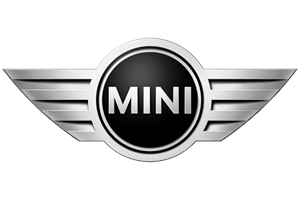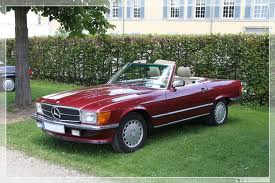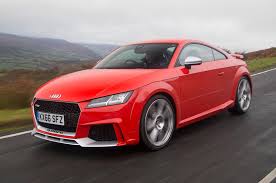


This edition of the Mini Cooper John Cooper Works 2.0 Turbo Cabriolet is the 6 speed / Manual version and was first brought out in 2016. This was at around the same time as the introduction of the 2017 Dodge Challenger SRT Demon 6.2 V8 and the 2016 Bugatti Chiron 8.0 W16 Quad Turbo.This particular Mini Cooper has a 1998cc Turbo Petrol powerplant with 4 cylinders in a St formation.
The Cooper shares its Petrol St4 engine configuration with the likes of the 2019 Ariel Atom 4 2.0 Turbo and the 2013 Caterham 7 620 R 2.0 L Supercharged. If you're looking for other fast cars which share the Cooper's Front Wheel Drive, Cabriolet combination then how about the 2022 Volkswagen-VW Golf R Performance 2.0 Turbo or the 2020 Toyota Avalon TRD 3.5 V6.
Weighing in at 1385 kgs (3053 lbs) this makes the Mini Cooper John Cooper Works 2.0 Turbo Cabriolet in the same weight category as the 2022 Koenigsegg CC850 4.9 V12 Twin Turbo or the give or take 50kg.
![Mini Cooper John Cooper Works Cabrio 2.0 Turbo - [2022] image Mini Cooper John Cooper Works Cabrio 2.0 Turbo - [2022] image](/editionimages/2340.jpg)
The Mini Cooper shares the same bhp with the 2022 Mini Cooper John Cooper Works Cabrio 2.0 Turbo (228 bhp)
In terms of power the 1998cc 16V St4 engine produces 228 bhp (170 kW) @ 5200 rpm similar to the 2022 Mini Cooper John Cooper Works Cabrio 2.0 Turbo (228 bhp) or the 2020 Audi TT S Turbo 50 TFSI (225 bhp).
The Turbo St4 throws out 236 lb-ft (319.9 Nm) @ 1250 rpm placing it with cars of similar torque performance figures such as the 2022 Mini Cooper John Cooper Works Cabrio 2.0 Turbo (236 lb-ft) or the 2020 Ford Puma ST 1.5 Turbo (236 lb-ft).
If one combines the weight with power or torque performance for the Mini Cooper you can get a better idea of it's real world performance.
![Honda S2000 2.2 Type S - [2007] image Honda S2000 2.2 Type S - [2007] image](/editionimages/1017.jpg)
The 2007 Honda S2000 2.2 Type S (189.6 bhp per ton) has similar Bhp Per Ton stats as the Mini Cooper.
The Mini Cooper has a Power to weight ratio of 164.6 bhp per ton and 170.3 lb-ft per ton. Bhp Per Ton figures of the 2016 Cooper competing with the 2007 Honda S2000 2.2 Type S (189.6 bhp per ton) or the 2017 Hyundai i30 N Performance 2.0 Turbo (189.6 bhp per ton).
If you agree with the late great Carroll Shelby then arguably an even better indicator of potential performance, Torque. Use weight as well and you end up with - Torque per ton, with the Mini Cooper generating around 170.3 lb-ft per ton. If you're curious as to what other cars have as much torque to weight then look no further than the 2005 Ford Mustang GT 4.6 V8 Convertible (195.2 lb-ft per ton) or the 1948 Ferrari 166 MM (195.0 lb-ft per ton).
With a 0-60mph time of 6.30 secs or a 0-100km/h (0-62mph) of 6.5 secs, this made the Mini Cooper John Cooper Works 2.0 Turbo Cabriolet as fast as the 2024 Mazda CX-90 S 3.3 Turbo (6.30 secs) the 2020 Audi A1 Sportback 40 TFSI S tronic S line (6.30 secs) the 2018 Ford Fiesta ST 1.5 Turbo 5 door (6.30 secs) the or the 2018 Ford Fiesta ST 1.5 Turbo (6.30 secs). This Mini Cooper John Cooper Works 2.0 Turbo Cabriolet is also faster than the 2022 Mini Cooper John Cooper Works Cabrio 2.0 Turbo (6.40 secs) the 2016 Ford Fiesta ST 200 1.6 Turbo (6.40 secs) the 2012 Subaru Forester STi tS 2.5L Turbo (6.40 secs) the and the 2011 Honda Civic 2.0i 16v VTEC Type R - FN2 (6.40 secs).
![Maserati Quattroporte AM337 2.0i V6 Bi Turbo - [1994] image Maserati Quattroporte AM337 2.0i V6 Bi Turbo - [1994] image](/editionimages/1897.jpg)
Quarter Mile time is a close race between the Cooper and the 1994 Maserati Quattroporte AM337 2.0i V6 Bi Turbo
When talking about the performance of the Mini Cooper on the drag strip it can reach a quarter mile in an estimated 14.65 secs @ 93.4 mph. Similar performance down the quarter mile can be found with the the 1994 Maserati Quattroporte AM337 2.0i V6 Bi Turbo (14.58 secs), the 2018 Alfa-Romeo Giulia Q4 2.0L Turbo (14.59 secs), and the 2006 Infiniti G35 3.5 V6 X (14.60 secs).
Modern performance cars are often artificially restricted to 155mph. The 2016 version of the Mini Cooper John Cooper Works 2.0 Turbo Cabriolet has a maximum speed of 150mph.
If maxing out your car on the AutoBahn is your thing and you're wondering what's faster than the 2016 Mini Cooper John Cooper Works 2.0 Turbo Cabriolet then how about the 2013 Porsche Panamera Diesel 3.0 V6 Turbo (161 mph), the 2013 Porsche Panamera 3.6 V6 (161 mph), or the 2011 Radical SR3 SL 2.0 Turbo (161 mph).










Lotus Esprit S3 Turbo SE
Engine: Turbo Petrol | 2174cc 16v St4
Top Speed: 159 mph
0-60mph: 4.90 seconds

Audi TT RS 2.5 Turbo
Engine: Turbo Petrol | 2480cc 20v St5
Top Speed: 249.4 kph
0-100kph: 3.7 seconds



















